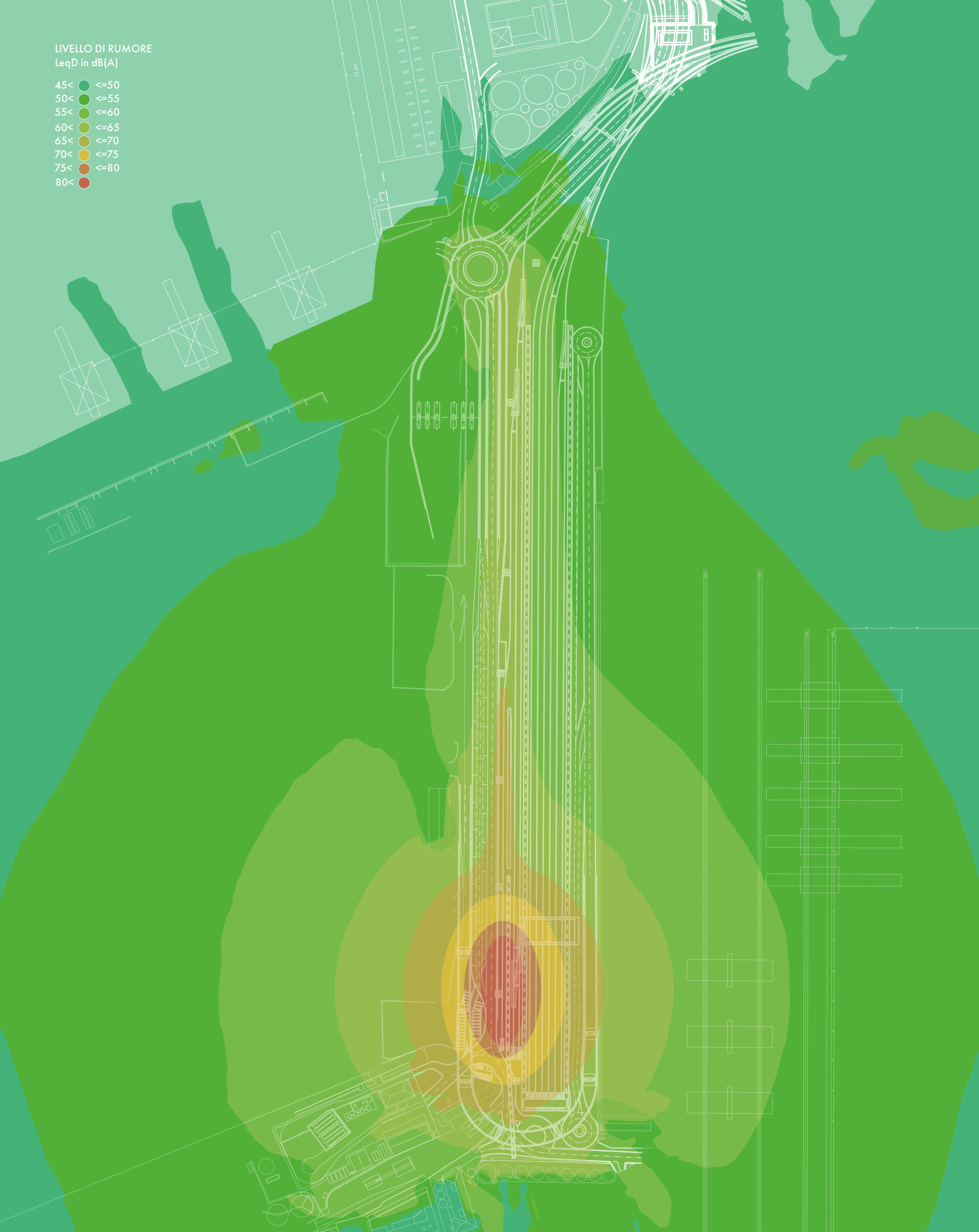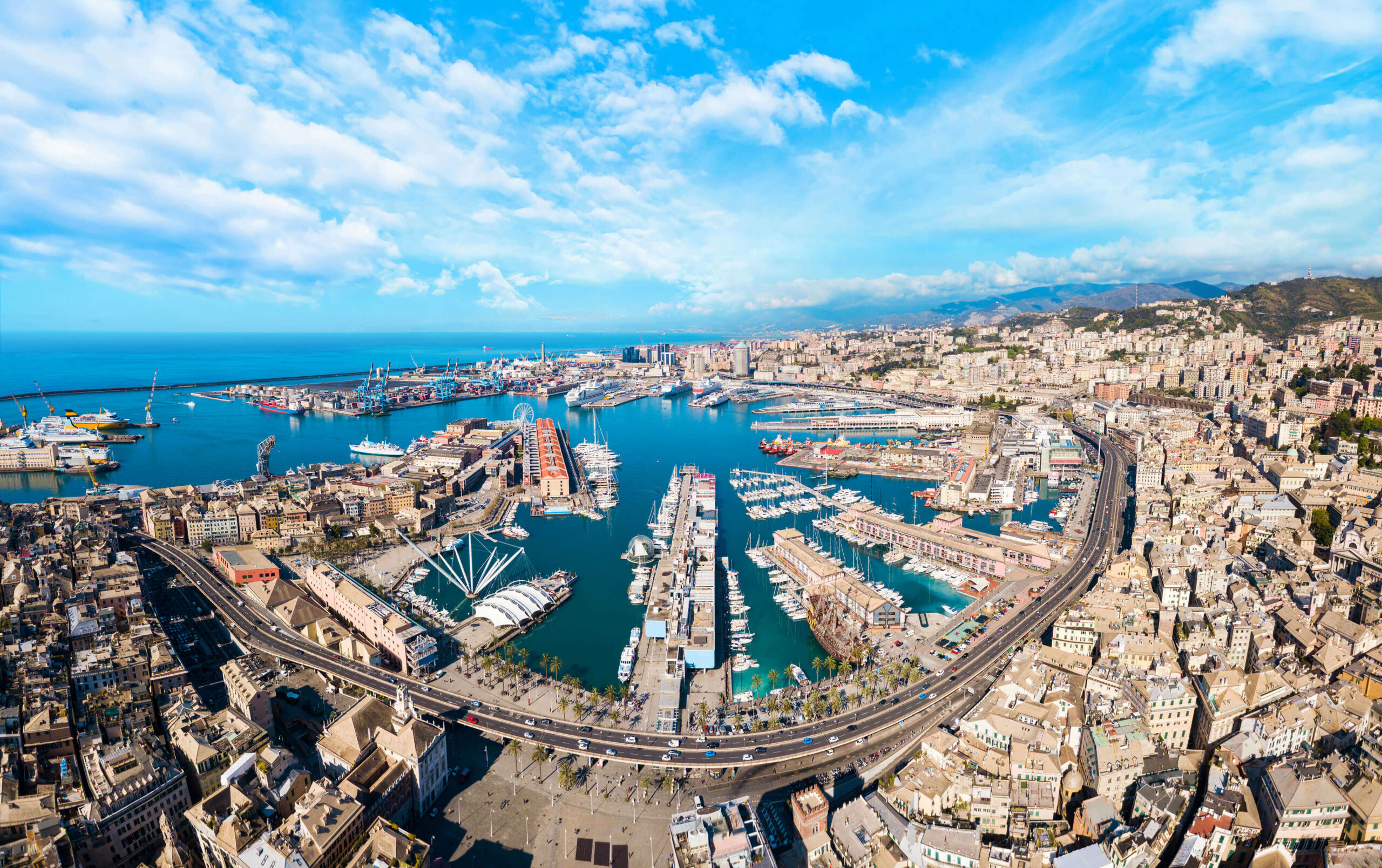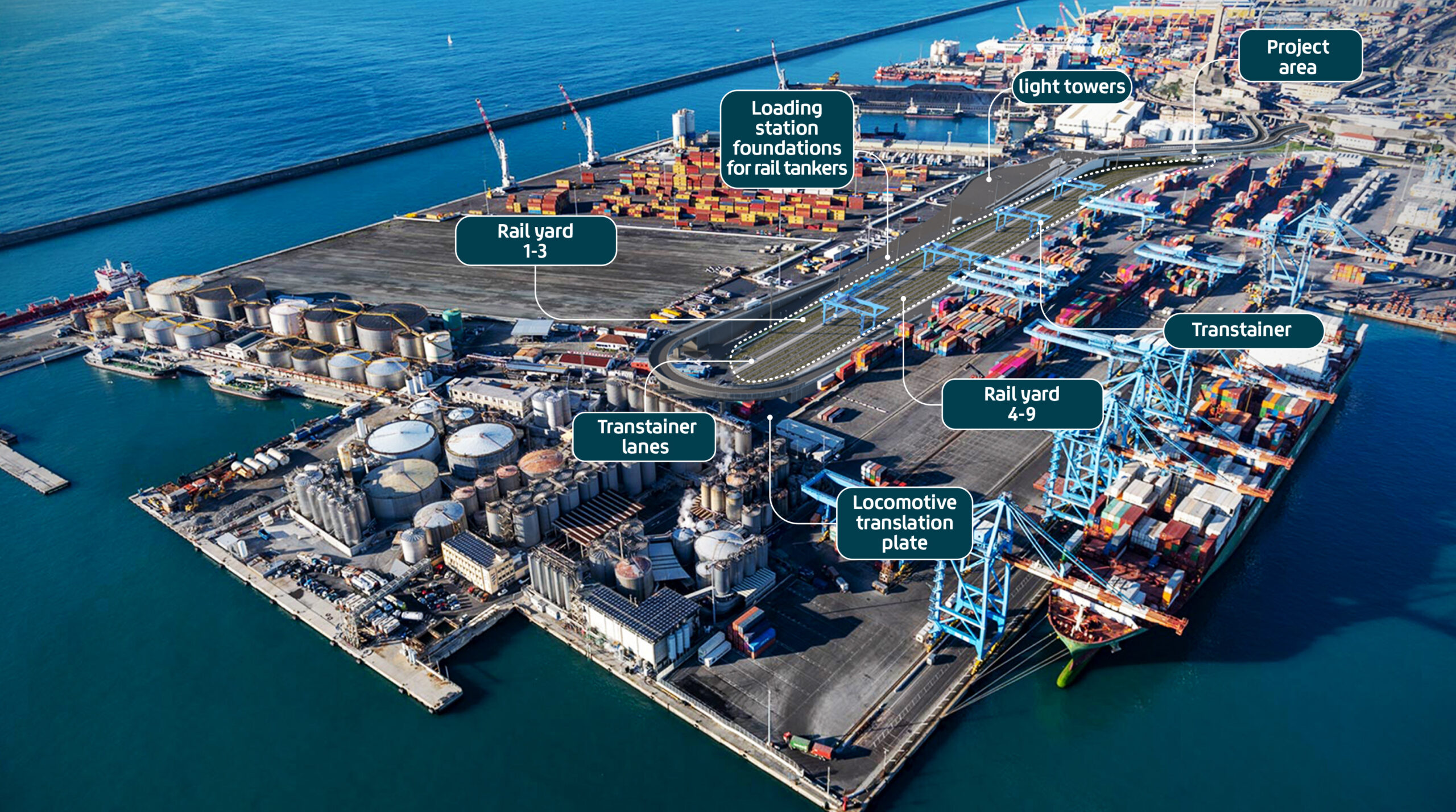The reconfiguration of the Calata Bettolo terminal in the port of Genoa
Civil engineering serving the goods terminal.
Historically, the port of Genoa is one of the main seaports in the Mediterranean; today, it is still the largest port in Italy with terminals equipped to deal with all types of goods and passenger traffic, offering highly complementary specialised services. One of the port operators, PSA SECH, has managed the Calata Sanità terminal, near the Calata Bettolo terminal, since 1993. The terminal has a favourable position for access by both sea and land as it is connected to the main transport road and rail networks. This makes it a nodal access point for the industrial areas of Northern Italy and Southern Europe.

The need to reconfigure the Calata Bettolo goods terminal arose to allow the modernisation of the logistic management of containers and hydrocarbons, seizing the opportunity of a road system project in the port which will impact the current operational configuration of the railway tracks. NET Engineering drafted a Final Design responding to the client’s needs for a consolidated contract setting out the complete operational revision of the shunting sidings, including lengthening them, and the creation of the civil and installation works necessary for the works to be totally functional.
The project contributes to improving terminal operations ensuring the handling of a higher number of trains/day for both containers and hydrocarbon transport, with enormous advantages for the port and, in general, the Genoa Hub transport system. Six new shunting sidings will be built in Calata Bettolo on the side towards the mountains to serve the container terminal. The sidings will have a strengthened RMG transtainer crane for which the foundations of the two runway rails and a duct for all the auxiliary services and to guarantee the medium voltage power supply of all systems have been prepared.
Downstream from the tracks, the project sets out the installation of a locomotive turntable allowing movement of the engines at right angles to the track so that the greatest length of railway can be used to form trains.On the side of the sea, however, three tracks dedicated to the management of hydrocarbons from railway tankers are planned. The tracks will have a loading position and the related duct for the piping and electrical systems.
Once the project has been completed, there are plans for the creation of public lighting systems, with the positioning of lighting towers and cable ducts for the technological networks, the reorganisation of the rainwater disposal network with a drainage channel and the resolution of all interference with the existing services underground.
NET Engineering also took on the railway signalling project arising from the integration of the tracks involving the port with the common RFI line, especially with the Single Genoa-Tortona HS Railway Project, which will increase the connections of ports in Liguria with the main railway lines of Northern Italy and the rest of Europe.
Environmental sustainability
NET Engineering also carried out the environmental feasibility study within the sphere of the project. In detail, this was an analysis of consistency with the planning tools and the structure of restrictions, in addition to the study of the environmental components involved in the project – atmosphere, hydrography, geology, land use, landscape, vegetation habitat and flora, acoustic climate, vibrations, ionising radiation and public health. Given the nature of the operation and context, special analysis was made of the impact on the atmosphere during the construction stage and the acoustic climate (construction and operational stages).
Personalised solutions
The design of the main civil works – the foundations of the transtainer crane, the transfer table for locomotives and loading positions for rail tankers – implied a lot of research work and technical analysis aimed at understanding the features of technologies unusual yet essential in a goods terminal.
The main result obtained by NET Engineering in this specific context was getting the different engineering disciplines to talk together for the ideal integration of the technologies in the project, reaching the point where personalised solutions outside standard ones were suggested, solutions able to optimise the space available in the best way.
Designing infrastructure for logistics means knowing how to design works with particular features that will be built in very restricted spaces where functionality of manoeuvres and operator safety are key parameters at the base of all planning. It means being able to adapt civil engineering skills to a market which makes technical and technological updating one of the main levers of advantage over competitors. It means talking to a client with very specific requirements to be fulfilled in times that must be respected. It means knowing how to move in an environment (the goods terminal) that is always operative during both the design and construction site stages.


